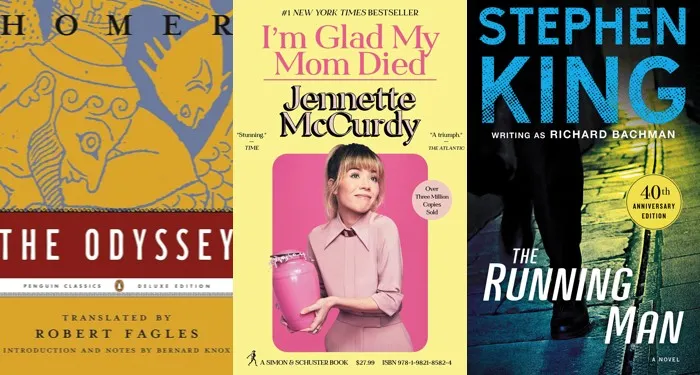In 1982 the great French crime novelist Jean-Patrick Manchette stopped publishing fiction. In almost a dozen novels over the previous decade, he had turned violent thrillers into “a sleek vehicle for social critique,” as Gary Indiana put it, combining overt leftist politics with stripped-down stories about hired killers and cynical detectives. But after The Prone Gunman, he decided he had reached the end of the road. The genre he was working in was now too complacent, too accepted, too normal to be used for subversion. It had become, he later said, “no more than a minor cultural commodity perfectly integrated into the order of things.” When he died in 1995, his next novel remained unfinished.1
No one would call Star Wars a minor cultural commodity at this point, but I found myself thinking of Manchette’s impasse while watching the second and final season of Andor. The show is both a particularly contemporary kind of cultural commodity—a streaming TV series that tells the backstory of one of the main characters of the movie Rogue One, which was set just before the events of the first Star Wars, which is to say a prequel to a prequel to a movie that came out almost fifty years ago—and a genuinely serious attempt at political art. Somehow, it exemplifies IP accretion while also telling a stylish, surprising, moving story about oppression, radicalization, violent resistance, and, in its second season, genocide.
That story is nestled carefully into a timeline that includes eleven films and thirteen other TV shows. Cassian Andor (Diego Luna) first appeared in Rogue One as a clandestine operator for the Rebellion, hardened, ruthless, and on the trail of vital information about the Death Star. Andor begins five years earlier, when Andor is still an apolitical small-time criminal on a backwater mining planet. The first season follows his radicalization over the next year—on the run after a violent encounter with police, cajoled into participating in a daring robbery on behalf of the Rebellion, briefly imprisoned, finally a fully committed rebel. The second season commits along with him, speeding up to cover the remaining four years before the movie (the show’s creators had initially planned on five seasons, then realized that would take too long to film), during which Andor, various other members of the Rebellion, and several Imperial agents on their trail come to realize the full horror of the war they’re engaged in.
The acclaim has been more or less universal: the show is “bracing” (The New York Times), “thrilling” (NPR), “the bleakest and best Star Wars story (and it isn’t close)” (The Washington Post). It is, it was widely declared, “Star Wars for grownups”—not because it’s more violent or explicit than other entries in the franchise but because it’s more thoughtful: the most rigorously plotted, subtly characterized, nuanced story ever told in this setting. It is “genuinely subversive in its unflinching portrayal of terroristic violence as legitimate and necessary” (The New Republic), and offers us “a clear lesson for fighting rising fascism” (The Intercept). And to do all this in the same galaxy as Jar Jar Binks? Well, that’s a “miracle” (New York Magazine).
It also, like many miracles, feels more than a little perverse. Andor is built on foundations that would seem precisely inimical to the kind of storytelling it attempts, a drama of sacrifice and moral compromise assembled from the leftover parts of a children’s adventure tale. Star Wars gets its power from images, not rigor; it works not in shades of gray but, almost literally, in black and white: the menacing black of Darth Vader and his squadrons of TIE fighters, the skeletal black and white armor of the Storm Troopers, against the motley earth tones and faded oranges of the Rebel Alliance. The original film was a kind of pop-cultural automatic writing, an improvised assemblage of adventure-serial plotting, fantasy tropes, sci-fi design, and samurai standoffs. Princesses and republics were on the same side because, well, both sound good.
Explanatory detail has been piped in over the decades to shore up the story a little, especially in books and other material outside the primary films and shows. (The Rise and Fall of the Galactic Empire, a fictional history by Chris Kempshall, who is otherwise mainly a historian of World War I, has become popular among some Andor fans.) But its fundamental workings remain mythical, not logical: good and evil, oppression and rebellion, fate, faith, and mystical bloodlines. If you’re trying to say something serious about how the world works, it’d be hard to think of a worse place to start.
*
That Andor succeeds to such an extent is a testament to its creator Tony Gilroy’s ingenuity as a narrative mechanic—to the skills he honed as a screenwriter on everything from The Devil’s Advocate and Armageddon to Dolores Claiborne and, most famously, the Jason Bourne series and Michael Clayton, his first film as a director. This show must be one of the cleverest feats of corporate storytelling of our time, and the smoothness of its execution—with the possible exception of the last few episodes of the second season, when the requirements of a prequel start to overtake it—hides how strange the whole endeavor is, and how much maneuvering it requires.
Gilroy and his collaborators carefully turn our gaze away from the sillier aspects of the setting, avoiding the Jedi and the Force and the lightsabers, deemphasizing the aliens and humanoid droids. Instead they direct us toward the physical details of the world—battered retro-futurist designs of the kind that were so effective in the original films—and the quotidian details of how a totalitarian empire exerts its power and how individual people try to resist: the way amoral bureaucrats jockey for power within the security services; the way Andor is picked up and imprisoned not for the crimes he’s actually committed but on trumped-up charges to fulfill a quota; the way rebels and oppressors might both push a situation toward violence, for their own purposes.
In the first season, especially, the show brings in other genres—a three-episode section structured around the elaborate heist Andor helps pull off, another centered on a slow-burn prison drama—to fill in the gaps where the space-fantasy would have been. It cleverly filters much of its early villainy through mundane workplace dramedy: the naive, pompous local cop Syril Karn (Kyle Soller), pursuing a troublesome investigation into one of Andor’s early crimes behind the back of his cynical superior; the ambitious Imperial Security Bureau officer Dedra Meero (Denise Gough), fighting sexism and indifference to prove the existence of a hidden network of sabotage and insurgency that only she believes in—the very network that Andor is in the process of joining.
Some of these people are preexisting characters, who need to be adapted and reimagined. Andor was one of the protagonists of Rogue One, which Gilroy cowrote and on which he served as the uncredited director for reshoots. The show needs to start him close enough to the committed, pragmatic operator we’ve already seen in the movie to get him there over the course of a couple seasons. As a result, though Luna’s performance is consistently believable, the evolution of his character is one of the least interesting, most conventional aspects of the series: a cynic-finds-a-cause journey we’ve all watched many times before, not least in the original Star Wars trilogy.
Mon Mothma (Genevieve O’Reilly), on the other hand, is fascinating. The character first briefly appeared in Return of the Jedi (1983) as the leader of the Rebel Alliance and has cropped up in various other Star Wars stories since (including in scenes cut from Revenge of the Sith, from 2005, when O’Reilly was first cast in the part). Here she becomes a wealthy, idealistic politician, a Galactic Senator whose do-gooder campaigns and general air of luxury and privilege mask her financial support of the nascent rebellion. To watch her is to watch a mask being wielded. She underreacts to everything, including the increasing alienation of her own family, to avoid giving herself away, a mix of steely graciousness and barely contained desperation. But she too has been carefully calibrated according to external requirements: she can be neither too blinkered nor too cynical, lest she fail to match the serene inspirational leader we’ve already seen her become; and, of course, however imperiled she might feel, she will survive until the end.
With the new characters the show has a freer hand, but only to a point. The more important they become the more work has to be done to explain their previous nonexistence. We know that Meero won’t rise too far, because her eventual boss has already appeared as the primary villain of Rogue One and she was nowhere to be found. We know that Cassian’s romance with Bix (Adria Arjona) can’t last, not just because she seems to be falling apart over the course of the second season, from a mix of PTSD and drug abuse, but because she is not in Rogue One either. We know that Luthen (Stellan Skarsgaard) is doomed to die with his achievements as the clandestine leader of the rebellion unrecognized not just because he says so, with convincing bitterness, but because his name has never been mentioned in any of the shows and movies set after Andor. His preordained banishment from memory, and the strange blend of cynicism and idealism he represents, come to form one of the show’s central moral questions. “I’m condemned to use the tools of my enemy to defeat them,” he declares at the end of the first season. “I burn my decency for someone else’s future.” But all of it is shadowed by the fact that this franchise—this universe—will forget these questions the moment Andor ends, and that much of what seemed urgent and essential to this story will be rendered trivial by the next.
This sort of thing may no longer seem all that remarkable. We make similar calculations watching the latest Marvel movie or Game of Thrones prequel or John Wick spinoff or whatever else. But it is worth noting what an odd way this is to tell a story, and what an odd way to watch one. Franchise movies and TV shows now demand a particular kind of paranoia. Their stories and settings never quite make sense on their own terms: apparently important characters appear and disappear without explanation, obviously doomed characters somehow fail to die, objects are lingered on with unexpressed significance, stories end not so much with cliffhangers as with bulletins from another story entirely. Or that’s how it would look, at least, if we didn’t know what’s really going on: that these are all just part of a larger Master Plan—Marvel’s multi-phase “Cinematic Universe” (or “MCU”) or Lionsgate’s “World of John Wick” or, indeed, Disney’s “Star Wars universe” (not to be confused with the “Star Wars Expanded Universe,” which it replaced).
In these universes characters and settings are monetary assets, to be exploited, protected, and manipulated according to the owner’s wishes. Understanding them requires understanding what the owner wants: how this story fits not just with the other stories to which it is connected but into the ever-proliferating network of brand identity and profit opportunities of which it is a part. (This is one of the things that differentiates such corporate storytelling from mere sequels, and from the more familiar dictates of genres and adaptations.) It takes so much metatextual awareness that it can feel, at times, like watching Hollywood movies made under the Hays Code, or like reading novels written under strict censorship. The best works of corporate storytelling are, in a sense, acts of quiet resistance, written in the blank spots of the enforced narrative. In DC Comics in the 1980s, these were series like Alan Moore’s Swamp Thing or Grant Morrison’s Animal Man: unloved characters turned into radical explorations of the medium and kept as far away from the central continuity as possible.
Andor, at its best, is this kind of story, but it must work within much smaller margins. When Disney acquired the rights to Star Wars in 2012, it excised the unwanted complexities of the “Expanded Universe”—decades of novels, comics, and games—by fiat, relegating them to the desert of non-canonicity, which it branded “Star Wars Legends.” It then set about building a new canon, slicker, more homogeneous, based more directly on the original films: a kind of corporate fundamentalism. As with the other major IP regimes, its primary inspiration is the MCU, which turned what had been relatively unpopular superheroes into a money-printing machine by emphasizing a consistent light-heartedness, stylistic uniformity, and careful interconnection between films, which is to say control. The TV shows are no exception. So Andor, even as it makes a Star Wars story say far more than it ever has before, at the same time demonstrates the limits of the kind of storytelling that has come to dominate so much of popular culture.
*
Some of those limits can be seen in the show’s carefully controlled treatment of violence. Star Wars has always pioneered ways to make killing go down easy, from blasters and lightsabers in place of physical bullets and blades to masked Storm Troopers and battle droids in place of people with visible human faces. In Andor torture can be shown, and in fact comes to form a significant subplot, but only in an abstracted science-fictional form: not the rather crude physical methods we know from the real world, or even the various nonphysical forms of degradation our own government has specialized in, but a simple headset, which causes unimaginable suffering even as it makes that suffering easier to watch. Rape can be threatened but not actually experienced. Plenty of people die, of course, but they only occasionally bleed—most often when the violence is carried out by the villains. When Andor or his allies kill someone, it’s usually clean: a blaster shot, a cry, a fallen body.
The show does push at the edges of these limits: its heroes occasionally kill unarmed people, even ostensible allies. In the very first episode Andor is confronted with a cop who is unarmed, on his knees, begging for his life—and shoots him in the head. These actions, however, are always presented as being driven by panic or immediate necessity. The heroes kill out of desperation, or as a result of their commitment to the cause—never out of sadism, or nihilism, or an indifference to the lives of others. They have not dehumanized their opponents, even years into their war; the story, when necessary, does that for them.
Andor also, quite noticeably, shies away from showing the most unsettling of these acts. The shooting of the cop happens just at the edge of the screen; we see Andor’s face, we see his blaster go off, but nothing else. In the second season Luthen orders the murder of an ally who has become unreliable, but the murder itself is never depicted: just the moment he decides it must be done, and the effect of that decision on those who learn of it. The killing of an Imperial loyalist, by contrast, is faced directly: we see the shot hit him in the head, and we see his body bleeding on the floor.
There is a line being drawn here, and it’s not quite about violence—it’s about comfort. The audience can only be challenged so much; the ambiguities and complications can only go so far. At the very moments when Andor seems to be at its sharpest and least compromising, everything gets a little cleaner, a little easier.
The same is true of the show’s approach to the implications of political violence more generally. The work that seems to be invoked most often in describing Andor is Gillo Pontecorvo’s The Battle of Algiers (1966), both as one of its inspirations and as an analogue to its achievement. In the first season especially, Andor often draws from the look and feel of the urban insurgency in Pontecorvo’s film: messages circulate around a crowded city under the noses of the occupiers; imperial soldiers march through the main streets while rebels scurry through the surrounding alleys.
But this resemblance evaporates if you look any closer. The Battle of Algiers is not just tense but often deeply uncomfortable to watch. Its conflict is dirty, with appalling actions on both sides: the Algerian insurgents are fighting for liberation, but they plant bombs in cafes full of civilians, including children. And the film goes to great lengths to remind you that all this really happened, just a few years before—that real people died, killed by real people who are still around (some of whom helped make the film). Sorting out one’s feelings requires thinking beyond the movie, to the history it depicts—but Andor, of course, has no such history to point to. Even its fictional histories are either omitted entirely or hastily sketched. Ferrix, the planet on which Andor is living when the show begins, is a remarkably convincing rendition of a futuristic but hardscrabble mining community. Its problem, however, is simple and tractable—the Empire, nothing more. It has no pieds-noirs to grapple with, no assassinated moderates, no inevitable blending of its culture with that of its occupier.
This is an insurgency in which the bad guys are generally considerate enough to keep their uniforms on, so the rebels know who to shoot at. The show is unusually interested in their psychology—in Meero’s obsessive ambition, in Karn’s fussy rage for order—but it keeps them distinct from the rest of the population. There are no Imperial sympathizers being strung up or spared, no Imperial businessmen eagerly profiting from the oppression, no Imperial missionaries converting the locals, no vacationing Imperial citizens being maimed in the name of freedom. The closest the show gets to an overt act of terrorism comes in flashback late in the second season: Luthen and his young protégé and surrogate daughter, Kleya, remote-detonate a bomb while sitting in a cafe, destroying a nearby bridge filled with Imperial troops. It is, in its intimate, cold-blooded violence, a rather shocking thing to see in a Star Wars show (and impossible to imagine being depicted this way a few decades ago). But even here there appear, rather implausibly, to be no civilians on that bridge.
In such scenes Andor reaches the end of what it can say. When it sticks to the emotional reactions of specific characters, it can be brilliant. Mon dancing hectically, drunkenly at her daughter’s wedding as she accepts that the movement to which she has devoted herself has cost her her family’s love, and is about to murder one of her oldest friends; Dedra having to almost physically hold herself together as she chokes back her revulsion at the atrocity her zeal has led to; Luthen barely suppressing his resentment and envy of other people’s illusions: here the show finds nothing but truth. But when it has to confront the reality of political violence, it retreats into vagueness—the general idea of resistance, the aesthetics, the vibes.
Similarly, many of its most memorable sequences are purely rhetorical. The show is punctuated by stirring monologues about the experience of oppression and the meaning of rebellion. “Remember this,” a frail young rebel declares in a manifesto that will spread long after his death: “Freedom is a pure idea. It occurs spontaneously and without instruction.… The Imperial need for control is so desperate because it is so unnatural. Tyranny requires constant effort. It breaks, it leaks…. Oppression is the mask of fear.” (That one has, for obvious reasons, been much quoted online recently.)
*
The series’s most surprising speech comes late in the second season. Mon Mothma—still a senator, though she is about to flee—addresses the Galactic Senate and declares: “Of all the things at risk, the loss of an objective reality is perhaps the most dangerous.” It’s the kind of thing you expect to hear in 2025, but maybe not on Disney Plus. She goes on: “What happened yesterday on Ghorman was unprovoked genocide. Yes—genocide!”
It is not just shocking that a Disney Star Wars spinoff contains a statement directly about genocide denial. It is even more shocking that it comes as the culmination of the entire series. The second season is built around the Empire’s secret preparation, execution, and attempted coverup of a genocide on Ghorman, a prosperous mercantile planet that, it turns out, also contains a rare, powerful mineral that can only be extracted by rendering the planet uninhabitable, or even destroying it entirely.
We watch as this plan is discussed at a Wannsee-like secret conference; as Fox News-ish Imperial broadcasts begin depicting the Ghormans as greedy, arrogant, uncooperative; as Imperial troops become more and more visible and oppressive on Ghorman; as Ghorman representatives become increasingly isolated in the Senate; as the Ghorman resistance is manipulated into becoming militant; and finally as a Ghorman protest march is slaughtered, and the violence used as a pretext for the full occupation and destruction of the planet. The plotline helps give the longer timespan of the second season a mournful, desperate momentum. There are moments that achieve an unexpected grandeur: just before the massacre the protesters sing the Ghorman anthem, fists raised in the air, and the tones of this made-up song in a made-up language, by a people on a made-up planet, are improbably stirring.
But the Ghorman genocide, more than any other aspect of Andor, shows how much of political reality lies beyond the show’s grasp. Ghorman is clearly meant to evoke Europe under threat by the Nazis. It’s a place of winding streets, open plazas, and grand old cafes, whose inhabitants wear a slightly fantastical version of midcentury garb—beret-like hats, long coats, tailored shirts, the occasional high collar, dark grays and browns. Their language is invented but clearly European; it was, according to its creator, “loosely inspired by the inventory of terrestrial French.”
The wider political situation, though, remains too vague for any of this to have any meaning beyond superficial resemblance. Nothing like the Munich Agreement could ever exist in this universe, in which the only powers are the Empire and the still-nascent Rebellion—a universe defined, at its core, by the binary of oppression and resistance, not shifting alliances and muddled diplomacy. The show’s invocation of the French resistance—especially of Jean-Pierre Melville’s film Army of Shadows (1969), The Battle of Algiers’s only competitor for most common Andor comparison—is likewise denatured and idealized. There appear to be no Ghorman collaborators, and certainly nothing like a Ghorman Vichy, or Ghormans consorting with Imperial soldiers to get by. The crushing loneliness and paranoia of Army of Shadows, the pervasive fear of betrayal, the fearful ruthlessness in assassinating one’s erstwhile comrades: all this, too, has been turned into a style to be quoted.
And so when the genocide comes, it, like everything else, must pass through the filter of simplicity. Few atrocities go down so easy. There are the perpetrators, with their clear, self-interested motivations—evil but rational; there are the victims, noble, suffering, innocent; and there are the innumerable bystanders, from whom the truth of these events has been kept quite thoroughly. (There is also the origin story for Andor’s snarky droid sidekick from Rogue One, awkwardly slipped into the middle of the massacre.) No preexisting prejudices—racial, national, sectarian—feed into the events; no neighbors enthusiastically join in, or pretend not to notice, or quietly benefit. No spaceshiploads of refugees get turned away by neutral planets, no companies profit by selling the means of the massacre or buying up abandoned properties, no public grows bored of hearing about the deaths. The secrecy around it all protects the galaxy’s inhabitants from any question of complicity. How little, beyond the fashion, it resembles the Holocaust—or, for that matter, the genocide we’ve all been watching, or not watching, for the past year. Disney is in the business of fantasies, and this is genocide as we would dearly prefer it to be.
And how could it not be? It’s Star Wars, after all. The point is not that Andor fails in its effort to depict political violence but rather that, for all the show’s intelligence and skill and ingenuity, major elements of its subject are simply incompatible with its nature. What it depicts most clearly is what Star Wars can’t show.
Which is also what almost nobody else can show, it seems. There is no other mainstream portrayal of this kind of material to rival Andor, sci-fi or otherwise. Mainstream non-IP movie production has been hollowed out; TV production has become fragmented and formulaic. There appears to be no money for big, inescapably political films and shows—not just for anything like Apocalypse Now but even for the likes of The Insider, or Munich, or Deadwood. Corporate storytelling is one of the only avenues left for ambitious filmmakers. It’s why Ryan Coogler had to spend a decade slotting his dynamic examinations of race in America into Marvel movies and a Rocky spinoff, why Chloé Zhao swerved from an Oscar-winning neorealist film about American poverty to yet another Marvel movie—and why Gilroy, a prodigiously clever writer with a longstanding interest in deception, moral compromise, and governmental conspiracy, ended up making the most ambitious work of his career under the sign of Star Wars.
There was a time when Star Wars and Jaws and the many blockbusters to which they gave birth could still be seen as a sideline to the real culture, a diversion for kids and holidays, or at least as one strand among many. Now, of course, their progeny have choked out practically everything else. It’s hard to imagine even something like Michael Clayton—a cannily structured star vehicle but also a forceful consideration of corporate corruption and complicity—achieving the wide success it did, or getting made at all. The longer this pattern continues the easier it gets to take for granted the widening hole in our movie theaters and TV screens: not just the art that isn’t being made but the many urgent aspects of the world that our popular culture is no longer willing or able to reflect. It’s hardly Gilroy’s fault that Andor stands so alone, or that its concerns have become so much more urgent since he began making it. It’s good that oppression, resistance, and genocide have some presence in our living rooms, even if they do come from a galaxy far, far away. But is that really how far away we have to be to see those things?






















 English (US) ·
English (US) ·